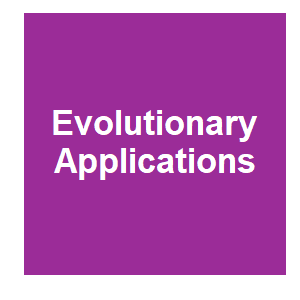
Keywords: haplodiploid

|
Modelling homing suppression gene drive in haplodiploid organismsY. Liu and J. Champer, Proceedings of the Royal Society B: Biological Sciences, 289:20220320. 2022.
Gene drives have shown great promise for suppression of pest populations.These engineered alleles can function by a variety of mechanisms, but themost common is the CRISPR homing drive, which converts wild-type allelesto drive alleles in the germline of heterozygotes. Some ... Keywords: Cas 9, CRISPR, gene drive models, gene drive synthetic, haplodiploid, simulation, synthetic homing drive |

|
Modelling homing suppression gene drive in haplodiploid organismsY. Liu and J. Champer, bioRxiv, 2021.10.12.464047. 2022.
Gene drives have shown great promise for suppression of pest populations. These engineered alleles can function by a variety of mechanisms, but the most common is the CRISPR homing drive, which converts wild-type alleles to drive alleles in the germline of heterozygotes. Some ... Keywords: Cas 9, CRISPR, gene drive models, gene drive synthetic, haplodiploid, simulation, synthetic homing drive |

|
Modeling homing suppression gene drive in haplodiploid organismsY. Liu and J. Champer, bioRxiv, 2021.10.12.464047. 2021.
Gene drives have shown great promise for suppression of pest populations. These engineered alleles can function by a variety of mechanisms, but the most common is the CRISPR homing drive, which converts wild-type alleles to drive alleles in the germline of heterozygotes. Some ... Keywords: Cas 9, CRISPR, gene drive models, gene drive synthetic, haplodiploid, simulation, synthetic homing drive |

|
A gene drive does not spread easily in populations of the honey bee parasite Varroa destructorN. R. Faber, A. B. Meiborg, G. R. McFarlane, G. Gorjanc and B. A. Harpur, bioRxiv, 2021.04.30.442149. 2021.
Varroa mites (Varroa destructor) are the most significant threat to beekeeping worldwide. They are directly or indirectly responsible for millions of colony losses each year. Beekeepers are somewhat able to control Varroa populations through the use of physical and chemical ... Keywords: Cas 9, CRISPR, gene drive models, gene drive synthetic, haplodiploid, simulation, synthetic homing drive |

|
The potential for a CRISPR gene drive to eradicate or suppress globally invasive social waspsP. J. Lester, M. Bulgarella, J. W. Baty, P. K. Dearden, J. Guhlin and J. M. Kean, Scientific Reports, 10:12398. 2020.
P. J. Lester, M. Bulgarella, J. W. Baty, P. K. Dearden, J. Guhlin and J. M. Kean (2020). Scientific Reports. doi: 10.1038/s41598-020-69259-6 Gene drives have potential for widespread and cost-efficient pest control, but are highly controversial. We examined a potential gene ... Keywords: Cas 9, CRISPR, gene drive models, gene drive synthetic, haplodiploid, simulation, synthetic homing drive |

|
Can CRISPR gene drive work in pest and beneficial haplodiploid species?J. Li, O. Aidlin Harari, A.-L. Doss, L. L. Walling, P. W. Atkinson, S. Morin and B. E. Tabashnik, Evolutionary Applications, 2020.
Gene drives based on CRISPR/Cas9 have the potential to reduce the enormous harm inflicted by crop pests and insect vectors of human disease, as well as to bolster valued species. In contrast with extensive empirical and theoretical studies in diploid organisms, little is known ... Keywords: Cas 9, CRISPR, gene drive models, gene drive synthetic, haplodiploid, simulation, synthetic homing drive |

|
Simulation models from: Can CRISPER-mediated gene drive work in pest and beneficial haplodiploid species?J. Li and B. Tabashnik, Dryad, 2020.
Gene drives based on CRISPR/Cas9 have the potential to reduce the enormous harm inflicted by crop pests and insect vectors of human disease, as well as to bolster valued species. In contrast with extensive empirical and theoretical studies in diploid organisms, little is known ... Keywords: Cas 9, CRISPR, gene drive models, gene drive synthetic, haplodiploid, simulation, synthetic homing drive |

Contact
David O’Brochta
Foundation for the
National Institutes of Health
geneconvenevi@fnih.org
RSS

